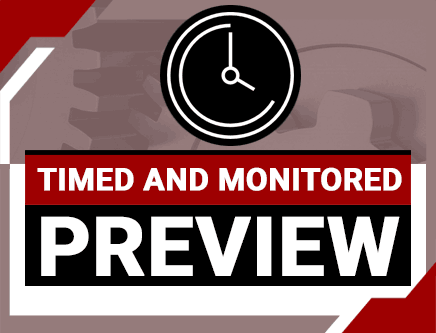Seismic Design - Evaluation and Retrofit of Existing Buildings (Ohio T&M)
Credit: 3 PDH
Subject Matter Expert: C. Gopalakrishnan, Civil Engineer
In Seismic Design - Evaluation and Retrofit of Existing Buildings , you'll learn ...
- Seismic triggers that require building owners to retrofit their buildings
- How extremely vulnerable building types can be identified by observation - without the need for statistical analysis
- The three levels of evaluation in ASCE 31-03, Seismic Evaluation of Existing Buildings
- The reliability of seismic evaluations
Overview

To meet the Ohio Board's intent that online courses be "paced" by the provider, a timer will be used to record your study time. You will be unable to access the quiz until the required study time of 150 minutes has been met.
Credit: 3 PDH
Length: 65 pages
Prior to the introduction of modern seismic codes in the U.S. in the late 1960s, many structures were designed without adequate detailing and reinforcement for seismic protection. Furthermore, many of those U.S. seismic codes enforced in the 1960s and even into the 1970s are now considered suspect.
It is widely recognized that the most significant seismic risk in the U.S. resides in our existing older building stock. Seismic retrofitting is the modification of an existing building to make it more resistant to seismic activity, ground motion, or soil failure due to earthquakes. With better understanding of seismic demand on structures and with our recent experiences with large earthquakes near urban centers, the need for seismic retrofitting is well acknowledged.
This course describes the many issues associated with the risk from existing buildings, including common building code provisions covering older buildings, evaluation of the risks from any one given building and what levels of risk are deemed acceptable, as well as methods of mitigation of these risks through retrofit.
Specific Knowledge or Skill Obtained
This course teaches the following specific knowledge and skills:
- Why so many existing buildings have inadequate seismic performance
- Recognition of the importance of non-linear response in seismic design
- Code requirements covering seismic retrofit of existing buildings
- Seismic triggers that require building owners to retrofit their buildings
- Passive vs. active code provisions
- The distinctions between green, yellow and red-tagged buildings following an earthquake
- List of FEMA documents which provide guidance on seismic rehabilitation
- What is HAZUS software and how it is used to estimate earthquake damage
- FEMA Model Building types, along with their common seismic deficiencies
- Expected performance based on building type
- How extremely vulnerable building types or components can be identified by observation - without the need for statistical analysis
- The three levels of evaluation in ASCE 31-03, Seismic Evaluation of Existing Buildings
- The data required for seismic evaluation of existing buildings
- The reliability of seismic evaluations
- The three basic categories of measures taken to retrofit a building
- The five basic issues that are always of concern to building owners when considering retrofit of a building to improve seismic performance
- Examples of retrofit projects employing steel braced frames and steel moment frames
- Special issues with seismic evaluation and retrofit of historic buildings
Certificate of Completion
You will be able to immediately print a certificate of completion after passing a multiple-choice quiz consisting of 15 questions. PDH credits are not awarded until the course is completed and quiz is passed.
| This course is applicable to professional engineers in: | ||
| Alabama (P.E.) | Alaska (P.E.) | Arkansas (P.E.) |
| Delaware (P.E.) | District of Columbia (P.E.) | Florida (P.E. Area of Practice) |
| Georgia (P.E.) | Idaho (P.E.) | Illinois (S.E.) |
| Indiana (P.E.) | Iowa (P.E.) | Kansas (P.E.) |
| Kentucky (P.E.) | Louisiana (P.E.) | Maine (P.E.) |
| Maryland (P.E.) | Michigan (P.E.) | Minnesota (P.E.) |
| Mississippi (P.E.) | Missouri (P.E.) | Montana (P.E.) |
| Nebraska (P.E.) | Nevada (P.E.) | New Hampshire (P.E.) |
| New Jersey (P.E.) | New Mexico (P.E.) | New York (P.E.) |
| North Carolina (P.E.) | North Dakota (P.E.) | Ohio (P.E. Timed & Monitored) |
| Oklahoma (P.E.) | Oregon (P.E.) | Pennsylvania (P.E.) |
| South Carolina (P.E.) | South Dakota (P.E.) | Tennessee (P.E.) |
| Texas (P.E.) | Utah (P.E.) | Vermont (P.E.) |
| Virginia (P.E.) | West Virginia (P.E.) | Wisconsin (P.E.) |
| Wyoming (P.E.) | ||


 Live support chat
Live support chat



